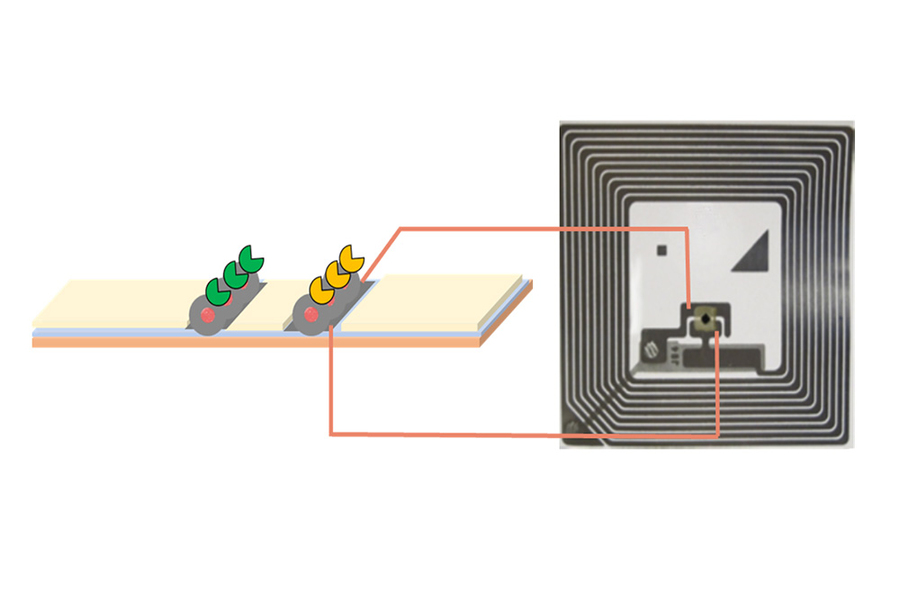
What is a Lateral Flow Immunoassay?
Lateral flow immunoassays, or lateral flow tests or strip tests, are simple and rapid diagnostic tools used to detect the presence or absence of a specific analyte, such as antibodies or antigens, in a sample. These tests are widely used in various fields, including medical diagnostics, food safety testing, environmental monitoring, etc.
Definition and Principle
A lateral flow strip cutter immunoassay is based on the principle of immune reactions between an analyte of interest and specific antibodies or antigens. The test comprises a porous membrane strip, which contains different zones designed to facilitate the flow of the sample through capillary action.
Components of a Lateral Flow Immunoassay
A typical lateral flow immunoassay consists of the following components:
- Sample Pad: Where the sample, such as blood, urine, or saliva, is applied.
- Conjugate Pad: Contains labeled antibodies or antigens that bind to the target analyte.
- Nitrocellulose Membrane: This membrane contains a test line and a control line. The test line contains immobilized capture antibodies or antigens interacting with the analyte. In contrast, the control line confirms the proper functioning of the test.
- Absorbent Pad: Absorbs excess liquid and waste generated during the test.
How Does it Work?
When the sample is applied to the sample pad, it migrates through the conjugate pad. Suppose the analyte is present in the sample. In that case, it binds to the labeled antibodies or antigens in the conjugate pad, forming a complex. This complex then moves along the strip and interacts with the captured antibodies or antigens in the test line. If the analyte is present, a visible colored line appears on the test line, indicating a positive result. The excess complex continues to flow and binds to the control line, producing another colored line, confirming the validity of the test.
Applications of Lateral Flow Immunoassays
Lateral flow immunoassays have a wide range of applications, including:
Medical Diagnostics
Lateral flow immunoassays are commonly used in medical diagnostics due to their simplicity, rapidity, and cost-effectiveness. They are employed in diagnosing infectious diseases, cardiac markers, cancer biomarkers, and drug abuse testing.
Pregnancy Tests
One of the most well-known applications of lateral flow immunoassays is in pregnancy tests. These tests detect the presence of human chorionic gonadotropin (hCG) in urine to confirm pregnancy.
Food Safety Testing
Lateral flow immunoassays ensure food safety by detecting contaminants such as pathogens, allergens, and pesticides in food products.
Environmental Monitoring
These tests are also used for environmental monitoring, helping to detect pollutants, toxins, and other environmental hazards.
Advantages and Limitations of Lateral Flow Immunoassays
Advantages
- Rapid results: Lateral flow immunoassays provide results within minutes, making them ideal for point-of-care testing.
- User-friendly: They are simple to use and require minimal training.
- Cost-effective: The manufacturing process is inexpensive, leading to affordable test kits.
- Portable: These tests are compact and portable, enabling testing in remote or resource-limited areas.
- Non-invasive: Many lateral flow tests use non-invasive samples like saliva or urine.
Limitations
- Sensitivity and specificity: Lateral flow immunoassays may have lower sensitivity and specificity than laboratory-based tests.
- Quantitative limitations: These tests provide qualitative results and may not quantify the analyte accurately.
- Shelf life: Test kits have a limited shelf life, and improper storage can affect accuracy.
- Multiplexing challenges: Developing multiplex lateral flow tests for multiple analytes can be complex.
Lateral Flow Immunoassay Development and Manufacturing Process
The development and manufacturing of lateral flow strip cutter immunoassays involve several critical steps, including antigen or antibody selection, conjugation of labels, membrane coating, assembly, and packaging. Each step must be carefully optimized to ensure test reliability and accuracy.
Quality Control in Lateral Flow Immunoassays
To maintain the reliability and consistency of lateral flow immunoassays, rigorous quality control measures are implemented throughout the manufacturing process. These measures include batch testing, stability studies, and ongoing performance monitoring.
Future Prospects of Lateral Flow Immunoassays
As technology advances, lateral flow immunoassays continue to evolve. Researchers are exploring ways to enhance sensitivity and develop multiplex tests capable of detecting multiple analytes simultaneously. These improvements will further expand the applications and utility of lateral flow immunoassays in various fields.
Conclusion
Lateral flow immunoassays have revolutionized the field of rapid diagnostics by providing quick and reliable results for various applications. Their simplicity, affordability, and portability make them indispensable medical, food safety, and environmental testing tools. With ongoing research and advancements, lateral flow immunoassays are poised to play an even more significant role in the future of diagnostic testing.
FAQs
- Are lateral flow immunoassays accurate? Yes, lateral flow immunoassays can provide accurate results when properly manufactured and used per instructions.
- Can lateral flow tests detect multiple analytes at once? Researchers are working on developing multiplex lateral flow tests capable of detecting multiple analytes simultaneously.
- How long does it take to get results from a lateral flow test? Lateral flow tests typically provide results within minutes, making them ideal for quick diagnostics.
- What are the limitations of lateral flow immunoassays? Lateral flow tests may have lower sensitivity and specificity compared to laboratory-based tests.
- Can lateral flow tests be used at home? Many lateral flow tests are designed for home use and can be easily performed without professional assistance.


